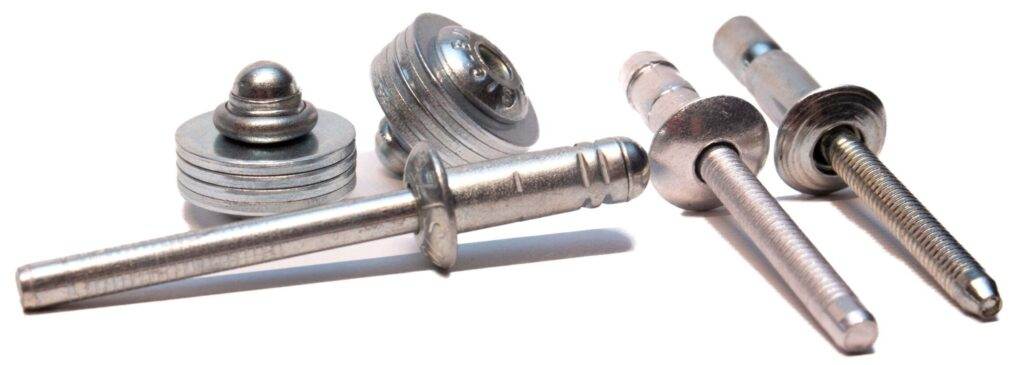A Blind Rivet is a type of fastener used to join two or more pieces of material together, particularly when access to the back side of the joint is considered impossible. The blind rivets are designed to be installed from one side of the workpieces which makes them perfect for applications where only one side of the joint is accessible. These materials provide users with a strong, reliable, and efficient fastening solution that is usable in a wide range of applications.
Blind Rivet Prices
Blind rivets are sold in bundles, and their prices vary based on the brand and size. On average, you can purchase blind rivets for around ₱30.00 to ₱60.00 per 50 pcs.
| Stock No. | Size | Quantity | Price |
| 43005 | 2.4×6.4mm | 50 pcs | ₱30.00 |
| 43006 | 2.4x8mm | 50 pcs | ₱30.00 |
| 43007 | 3.2×6.4mm | 50 pcs | ₱30.00 |
| 43008 | 3.2x10mm | 50 pcs | ₱40.00 |
| 43009 | 4x10mm | 50 pcs | ₱40.00 |
| 43010 | 4×12.7mm | 50 pcs | ₱40.00 |
| 43011 | 4.8×12.7mm | 50 pcs | ₱55.00 |
| 43012 | 4.8x16mm | 50 pcs | ₱60.00 |

Advantages of Blind Rivet
Easy to Install – Blind rivets are relatively easy to install, as they require only simple tools such as a rivet gun or a pneumatic riveter which makes them suitable for most assembling tasks.
Speed and Efficiency – Blind rivets can be installed and used quickly and efficiently, which makes them suitable for high-volume production environments. Moreover, automated riveting systems can further enhance speed and efficiency in assembly line operations.
Versatility – These materials are compatible with a wide range of materials, including metals, plastics, composites, or wood, and can be used in diverse applications across industries helping provide a versatile fastening solution for various materials and substrates.
High Strength – Blind rivets provide strong and reliable connections as they offer high shear and tensile strength. They are suitable for structural applications where a permanent and secure fastening is required.
Disadvantages of Blind Rivet
Limited Joint Thickness – Blind rivets are designed for specific joint thicknesses, and using them outside of their recommended range can result in inadequate fastening or joint failure.
Visible Head – Blind rivets leave a visible head on one side of the joint, which may not be aesthetically pleasing in certain applications. Although this issue can be addressed by using flush or countersunk rivets, these may require special installation tools.
Single-Use Fastener – Blind rivets are typically single-use fasteners, which means that they cannot be easily removed or replaced once installed. This can be a disadvantage in applications where disassembly or repair is required, as removing the rivet typically involves drilling it out for replacement.
Video of Blind Rivet
FAQs
What is a blind rivet used for?
Blind rivet is used as an efficient solution for joining materials in situations where conventional fastening methods are not considered practical.
What is the difference between a rivet and a blind rivet?
A blind rivet is just one type of rivet, so there are no specific differences that set it apart from other varieties.
How do you use a blind rivet tool?
Using a blind rivet tool involves several steps:
- Insert the blind rivet into a pre-drilled hole.
- Position the tool over the exposed mandrel.
- Apply pressure to set the rivet.
- Release the mandrel.
- Inspect the joint for proper installation.
Are blind rivets strong?
Blind rivets are known for their strong and reliable fastenings.
What is the strongest type of rivet?
The strongest type of rivets may vary depending on how or where you are going to use them.


